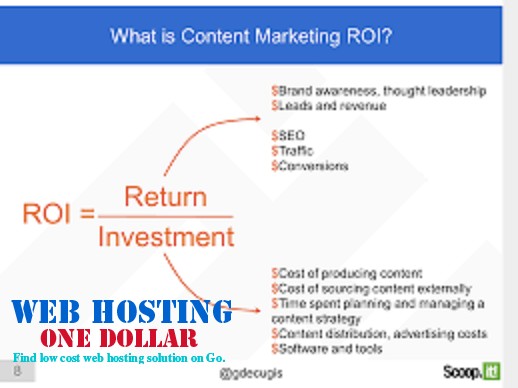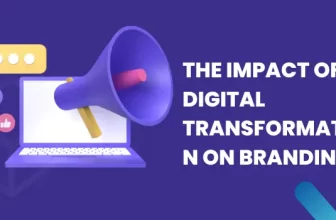
Since the explosion of the digital marketing platform, all companies have been investing in creating the best content with the goal of giving their brand a boost. But, unless there is a measurable metric that is directly related to their content as well as their revenue, it would be hard to understand if your content is really contributing to customer engagement. Know more about How to measure ROI in content marketing.
To know if your hard-earned investment in content marketing is really paying off, one of the best means is to measure your ROI.
Which brings us to the first question, what is ROI?
“The ROI related to content marketing is the percentage which reflects the amount of revenue gained by the process of content marketing as compared to what has been spent in crafting content.”
Since ROI is directly tied to Revenue, it is one of the most consistently used measures to check the benefit from a content marketing strategy.
To measure your content marketing ROI, there is a simple formula provided by Convince and Convert, which helps businesses weigh the amount spent on their content compared to the revenue they earned on it.
The steps to work it out are as follows:
Calculate the cost of creating the content
All content, be it done in-house or outsourced, will incur a cost. For in-house content, that would include the salary paid to the content developer, plus any additional content assets like audio and video which were used along with the content during production.
In the case of outsourced work, the cost increases manifold because it involves additional service charges. Therefore, taking all into consideration, the first step is to understand how much was spent in total during content creation.
Calculate the cost of producing and distributing the content
In this step, it is important to consider the expenses incurred in using all the channels that were used for content creation. Be it PPC advertising, social media advertising, offline advertising, there is a cost attached, and all of it should be included in the calculation.
Moreover, the cost of all the software and other tools that were used in the production must also be included to figure the complete production and distribution cost.
Convert all the cost into a single currency
When your content marketing strategies are effective, your content will generate leads, which will eventually convert into sales.
One of the most direct ways that content generates revenue is when the users read your content, click on Call to action and purchase something from your site.
In other ways, content doesn’t directly lead to sales, and in those cases, you have to check the other metrics like lead quality, sales, onsite engagement, website traffic, and others. The indirect method takes longer to calculate, but when you add it all up in the end, you get the overall sales accumulated from a piece of content, which will express the total revenue generated.
Mathematical formula for ROI calculation
To make this step easy, one can use the simple formula provided by Convince and convert, according to which, ROI is “Return subtracted by investment, divided by investment, whole expressed as a percentage”
One of the ways to understand this is:
Assume that the total investment used in producing your content is $600 and the total revenue generated from its sales is $2400. Then as per the formula, your ROI would be 300%.
That is calculated as:
$2400 – $600= $1800
$1800/ $600 = 3
3*100=300%
The main aspect to take away from this formula is that ‘more the difference between the revenue and investment, better is the ROI.’
So, either you have to find more cost-effective strategies to generate your content, or you should create better content that leads to more sales.
Even though the final element that comes in the calculation is sales and revenue, you should be even abreast and aware of the less tangible metrics like lead quality and website traffic to know how well your content is performing. The best way to know about all these intangible metrics is by employing Google Analytics for your website.
Conclusion
Content is an important factor that will play a big role in achieving the maximum customer engagement. Like companies such as Writers per hour that post informative content regularly, every company should invest in content that adds value to their customers. But unless ROI on those content is measured, it would be hard to deduce if your content marketing strategy is really paying off.
So, companies should regularly measure their content related ROI using direct and indirect metrics, and improve their content marketing strategies to enhance their leads and elevate their bottom line.






